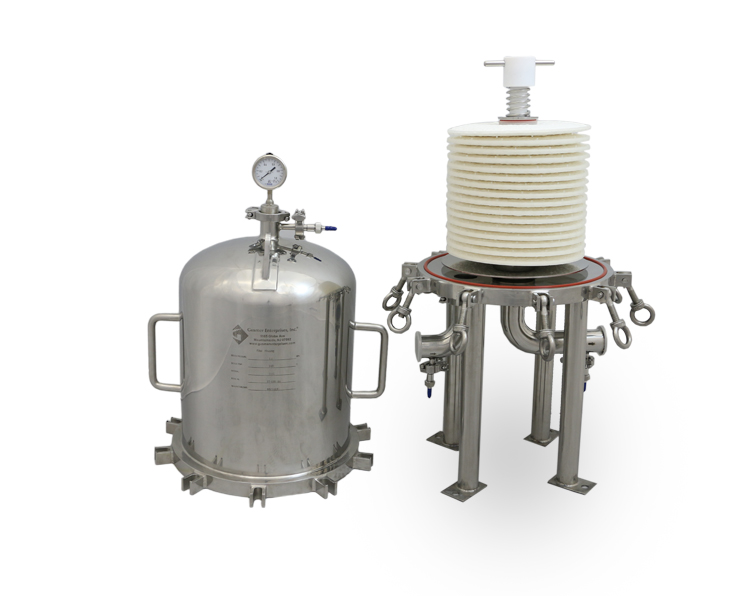Filter presses and lenticular housings are both solid equipment options that can handle small and large volume filtration jobs. Both are utilized in beverage, food, industrial, and pharmaceutical processing. The initial upfront equipment cost for each are comparable, however the final cost will depend on the size and features. Each option has pros and cons.
Filter press
Lenticular housing
Filter presses work with a full range of depth filter media and are an economical choice for most filtration applications. The size and dimension of the press plates determine the size and dimension of the filter sheets that can be used. Most popular are 40 cm and 60 cm presses, although hundreds of variations exist.
Pros
- Full range of filter media available, including media embedded with active carbon.
- Filter sheets are lower in cost per square foot of media compared to lenticular filters.
- Many sizes available, ranging from small benchtop units to units that can take up an entire room.
- Multi-step filtration (e.g., filtering from a coarse loose sheet to a finer polishing sheet) can be done in the same press with use of a crossover plate.
- Consistent performance.
- Can be very cost effective and gains in efficiency can be made through optimization.
Cons
- More time needed to load/unload sheets.
- Can take up a larger footprint than a lenticular housing.
- Not enclosed.
- Media in between uses cannot be stored for longer term use.
- Wicking or dripping from sheets can impact efficiencies.
Lenticular filter housings also work with a full range of depth filter media and are a great choice for filtering high value material. Lenticular filters are made up of pre-assembled “stacks” of filter sheets that have been molded together to provide a larger amount of filtration surface area in a compact form. Lenticular housings can be used with multiple lenticular filters or a single filter.
Pros
- Full range of filter media available, including media embedded with active carbon.
- Easier loading/unloading of lenticular filters.
- Housings are available in different diameters and height configurations.
- Smaller footprint due to its vertical orientation.
- Enclosed unit offers a more sanitary filtration and less product loss.
- Short term storage of filter media in between uses maximizes the life of the filter media.
- Consistent performance.
- Efficiencies can be gained through optimization.
Cons
- Lenticular filters are more expensive per square feet of filter media compared to filter sheets.
- Larger housing units may require additional equipment to safely lift the housing dome.
- More waste disposal from more components within the lenticular filter.
- Sensitive to backflow but easily avoided with a check valve.
- Some units are limited to use with manufacturer specific filters (i.e., cannot substitute with non-manufacturer lenticular filters).



